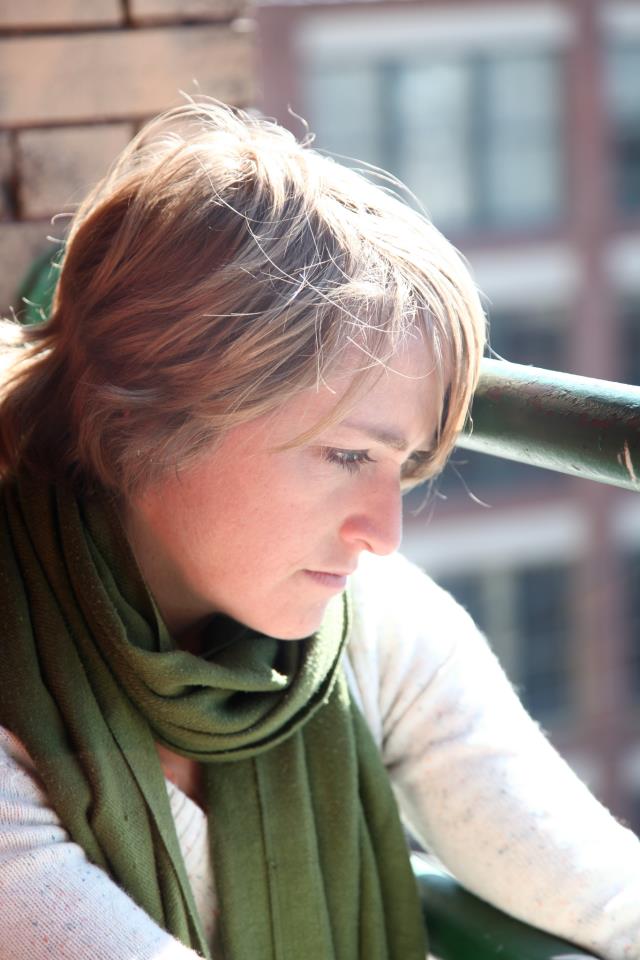
EMILY REA first became involved with TMT as Production Manager for the 20th Anniversary Lab at the Brick. This year, she will serve as Lead Artist for her production of OUTSIDE/IN which will premiere on December 18th at JACK. OUTSIDE/IN will explore “a space that is both public and private…” and witness “Yiddish poets… explod[ing] early notions of broadcasting and publication.” Currently, she serves as production manager for The Wooster Group and frequently utilizes site specific and experimental performance techniques within her work. Emily holds a Bachelors Degree in Directing from University of the Arts and a Masters Degree in Performance and Interactive Media Arts from Brooklyn College.
TMT: Emily, what was it that drew you toward Yiddish theater and Yiddish poetry more specifically?
ER: My experience with Yiddish theater is pretty limited, which is partially why I was interested in exploring it further and investigating themes found in this genre. Having some background in dramaturgy, I was drawn toward the challenge of researching and developing an original piece that explores, embraces, complicates and remixes the material. To me, what is especially interesting is the unique space that the Yiddish poets occupy in different histories- cultural history, political history, art history… The way that these groups have faded in and out of a larger literary consciousness-both locally and globally- is something that, to me, resonates deeply with the highly temporal culture of today.
TMT: Interesting. How do you see yourself interpreting the experience of the Yiddish Poets? How do you hope to incorporate your own interests and experiences?
ER: Having worked primarily in media-heavy experimental performance, I feel heavily influenced and inspired by the nature of media and how this has evolved over the last 100 years. How humans communicate has totally changed and to me this is intimately tied to language and artistic expression. I’m interested in the evolution from analog transmission to digital culture. In 2013, we experience a diaspora of communication modes, and accessibility of all of these modes is rapidly changing… from handwritten notes to daily rags to sound bytes and moving images, all of these types of media change the way that we perceive ideas, and each other. The Yiddish poets of the 20th century also have witnessed rapid changes of how communication happens, and were also faced with political situations that demanded new modes of communication and networking, so I’m hoping to tie these ideas together.
TMT: So how will your understanding of the development of information exchange affect the way one experiences Outside/In?
ER: The piece is really exploring how communication and media interlace with notions of public and private. Our contemporary notions of privacy are complicated by accessibility of information–today, sharing images, texts and ideas can be instantaneous, but how does the accessibility and mobility of media relate to the personal? When ideas are reproduced, amplified or repeated, do they automatically become less personal, even if the material itself is incredibly personal? How do different media and different modes of communication change our perceptions of personal and public? When is something truly outside of us, and when is it inside?
TMT: How do you feel these technological advances within modes of communication affected the Yiddish poets you are exploring?
ER: In every culture, there are certain norms about what happens in domestic space, what happens in community space and what happens in public space. When the public world begins to threaten our private lives, expression changes and normalcy becomes more charged and more important. I find it interesting that the advent of photography, radio and film coincide with the spread of pervasive anti-Semitism; for me this brings up the complexity of how the spread of ideas through new media not only facilitates knowledge and culture, but also contributes to fear-mongering and bigotry.
TMT: Emily, thanks so much for speaking with us! Tell us what’s next for you? How are you planning to keep busy in 2014?
ER: I am part of a collective of interdisciplinary artists called The Institute for Psychogeographic Adventure; in collaboration with local communities, we create site specific performance adventures for one audience member at a time. In 2013, we crafted two large-scale performances in DUMBO and at the Brooklyn Museum so we’re taking a bit of a break then plan on premiering our next “Experiment” during the summer of 2014.
Photo Credit Steven Dufala